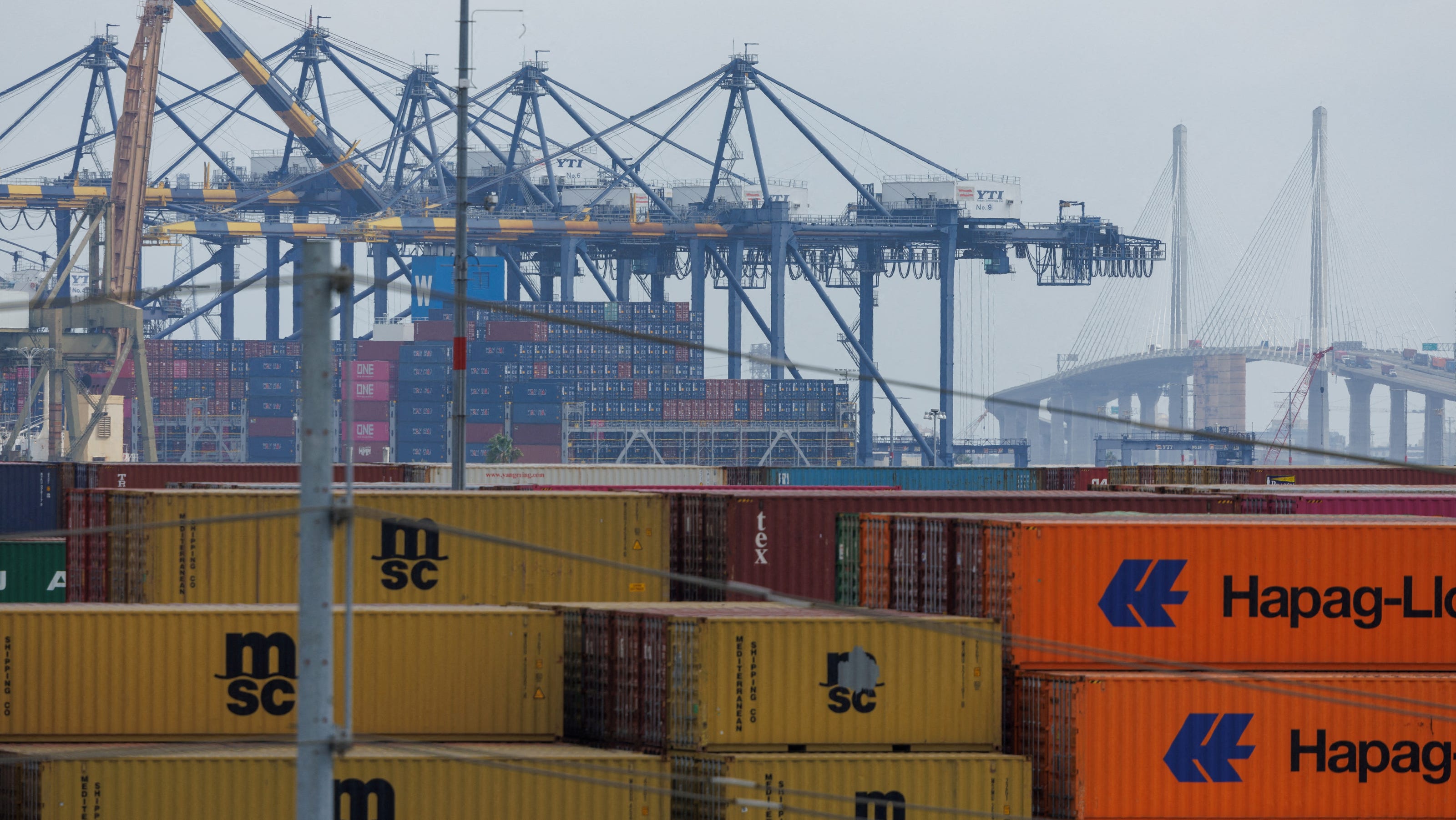The Impact Of Trump's Tariffs On US Manufacturing.

Table of Contents
This article explores the multifaceted impact of President Trump's tariffs on the US manufacturing sector. We will analyze the intended and unintended consequences of these trade policies, examining their effects on job creation, production costs, and the overall health of American manufacturing. Were these tariffs ultimately beneficial or detrimental to US manufacturing? Let's delve into the data and assess the complex legacy of this controversial trade strategy.
Intended Effects of Trump's Tariffs on US Manufacturing
The Trump administration's imposition of tariffs, particularly on steel and aluminum, aimed to achieve two primary objectives: protecting domestic industries and leveraging tariffs as bargaining chips in international trade negotiations.
Protecting Domestic Industries
The core argument behind the tariffs was to shield struggling American industries, like steel and aluminum production, from cheaper foreign competition. The intended outcome was threefold:
- Increased demand for domestically produced goods: By making imported goods more expensive, the theory was that American consumers and businesses would shift their purchasing towards domestically produced alternatives.
- Reduced reliance on foreign imports: The tariffs were designed to reduce the US's dependence on foreign suppliers, bolstering national security and economic independence, particularly in strategic sectors.
- Creation of new manufacturing jobs: Increased domestic production, the argument went, would naturally lead to a surge in manufacturing jobs within the protected sectors.
The administration specifically targeted steel and aluminum, arguing that these industries were crucial for national security. The 25% tariff on steel imports and the 10% tariff on aluminum imports were justified as necessary to prevent foreign producers from undercutting American manufacturers and potentially compromising the nation's defense capabilities. However, the reality proved to be significantly more complex.
Negotiating Better Trade Deals
A second, equally important goal was using tariffs as leverage in negotiations with China and other countries. The strategy was to pressure trading partners into making concessions on issues like intellectual property theft, unfair trade practices, and reducing trade imbalances. The intended outcomes included:
- Leveraging tariffs as bargaining chips: The administration viewed tariffs not just as punitive measures but as tools to force concessions at the negotiating table.
- Forcing concessions to reduce trade deficits: The large trade deficits with countries like China were a key concern, and tariffs were seen as a way to level the playing field and achieve a more balanced trade relationship.
- Achieving fairer trade practices: The administration aimed to address what it perceived as unfair trade practices, such as dumping (selling goods below cost) and subsidies provided to foreign producers.
The administration engaged in protracted trade negotiations with China, resulting in the "Phase One" trade deal in 2020. This deal involved China committing to purchasing more US goods and making some adjustments to its trade practices. Whether these concessions were directly attributable to the tariffs remains a subject of ongoing debate among economists.
Unintended Consequences of Trump's Tariffs on US Manufacturing
While the intended effects of Trump's tariffs were ambitious, several significant unintended consequences emerged, impacting various sectors of US manufacturing.
Increased Production Costs
One of the most significant unintended consequences was the rise in production costs for many US manufacturers. This resulted from:
- Higher prices for imported raw materials: Tariffs increased the cost of importing raw materials crucial for manufacturing processes, squeezing profit margins and impacting competitiveness.
- Increased costs for manufacturers reliant on imported components: Many manufacturers rely on imported components, and the tariffs increased the price of these inputs, leading to higher production costs and reduced competitiveness.
- Reduced competitiveness in global markets: The increased production costs made US manufacturers less competitive in international markets, leading to a decline in exports in certain sectors.
- Potential for job losses in industries dependent on imports: The added costs forced some companies to reduce output or even relocate production to countries with lower costs, resulting in job losses.
For example, the automotive industry, which relies heavily on imported steel and other components, faced significant cost increases, affecting both vehicle production and pricing.
Retaliatory Tariffs
A predictable consequence of Trump's tariffs was the imposition of retaliatory tariffs by other countries. These actions had several adverse effects on US manufacturing:
- Foreign countries imposing retaliatory tariffs on US goods: Countries like China, the European Union, and Canada responded with their own tariffs on US goods, impacting various sectors, including agriculture and manufacturing.
- Reduced demand for US exports: The retaliatory tariffs reduced the demand for US exports, leading to job losses in export-oriented sectors.
The retaliatory tariffs imposed by China, for instance, significantly hurt US agricultural exports, leading to financial hardship for many farmers.
Supply Chain Disruptions
Trump's tariffs also led to significant disruptions in global supply chains, creating problems for many manufacturers.
- Difficulties sourcing essential components from abroad: Tariffs made it difficult for some companies to source essential components from their usual foreign suppliers, forcing them to seek alternative, often more expensive, sources.
- Delays in production: Supply chain disruptions led to delays in production, impacting businesses' ability to meet deadlines and fulfill orders.
- Increased uncertainty for manufacturers: The unpredictable nature of the tariff policies created uncertainty for manufacturers, making it difficult to plan for the future and make investment decisions.
- Reduced investment in the manufacturing sector: The uncertainty and increased costs discouraged investment in the manufacturing sector, hindering long-term growth and modernization efforts.
Small and medium-sized enterprises (SMEs) were particularly vulnerable to these supply chain disruptions, lacking the resources and flexibility of larger corporations.
Long-Term Effects and Economic Analysis
Assessing the long-term effects of Trump's tariffs requires a nuanced analysis considering various economic indicators.
Overall Impact on Manufacturing Employment
While some sectors may have experienced short-term job gains due to increased domestic production, the overall impact on manufacturing employment is debatable. Many economists argue that the job losses due to retaliatory tariffs, increased costs, and supply chain disruptions outweighed any job gains in protected sectors. Detailed statistical analysis is needed to quantify the net effect accurately.
Impact on GDP and Economic Growth
The impact of the tariffs on the US Gross Domestic Product (GDP) and economic growth is also a subject of ongoing debate. Some studies suggest that the tariffs had a negative impact on GDP growth, while others claim the impact was minimal or even positive in certain sectors. Economic models used to analyze these effects often provide conflicting results, underscoring the complexity of the issue.
Changes in Global Trade Relationships
Trump's tariffs fundamentally altered the US's relationships with its major trading partners. The resulting trade tensions and retaliatory measures created uncertainty and damaged trust, potentially impacting long-term trade relationships and collaborations. The long-term consequences of this erosion of trust are still unfolding.
Conclusion
The impact of Trump's tariffs on US manufacturing is complex and multifaceted. While the administration aimed to protect domestic industries and improve trade deals, the unintended consequences, including increased production costs, retaliatory tariffs, and supply chain disruptions, presented significant challenges for many American manufacturers. The net effect on manufacturing jobs and overall economic growth remains a topic of considerable debate among economists. The long-term implications for US trade relationships also require careful consideration. Further research on the long-term effects of Trump tariffs on US manufacturing is crucial to inform future trade policy. Understanding the complexities of global trade and the nuances of tariff implementation is vital for the future prosperity of American manufacturing. Therefore, continued analysis and discussion surrounding the impact of Trump tariffs and similar trade strategies are necessary to make informed decisions regarding future trade strategies.

Featured Posts
-
 Trebovanie Azerbaydzhana K Bi Bi Si Posledstviya Dlya Media Svobody
May 06, 2025
Trebovanie Azerbaydzhana K Bi Bi Si Posledstviya Dlya Media Svobody
May 06, 2025 -
 Celtics Vs Heat Tip Off Time Tv Channel And Live Stream February 10th
May 06, 2025
Celtics Vs Heat Tip Off Time Tv Channel And Live Stream February 10th
May 06, 2025 -
 Gypsy Rose Blanchard Net Worth Income After Prison Release
May 06, 2025
Gypsy Rose Blanchard Net Worth Income After Prison Release
May 06, 2025 -
 Fortnite Players Can Now Dance Like Sabrina Carpenter
May 06, 2025
Fortnite Players Can Now Dance Like Sabrina Carpenter
May 06, 2025 -
 Gypsy Rose Blanchards Net Worth And Post Prison Earnings
May 06, 2025
Gypsy Rose Blanchards Net Worth And Post Prison Earnings
May 06, 2025
